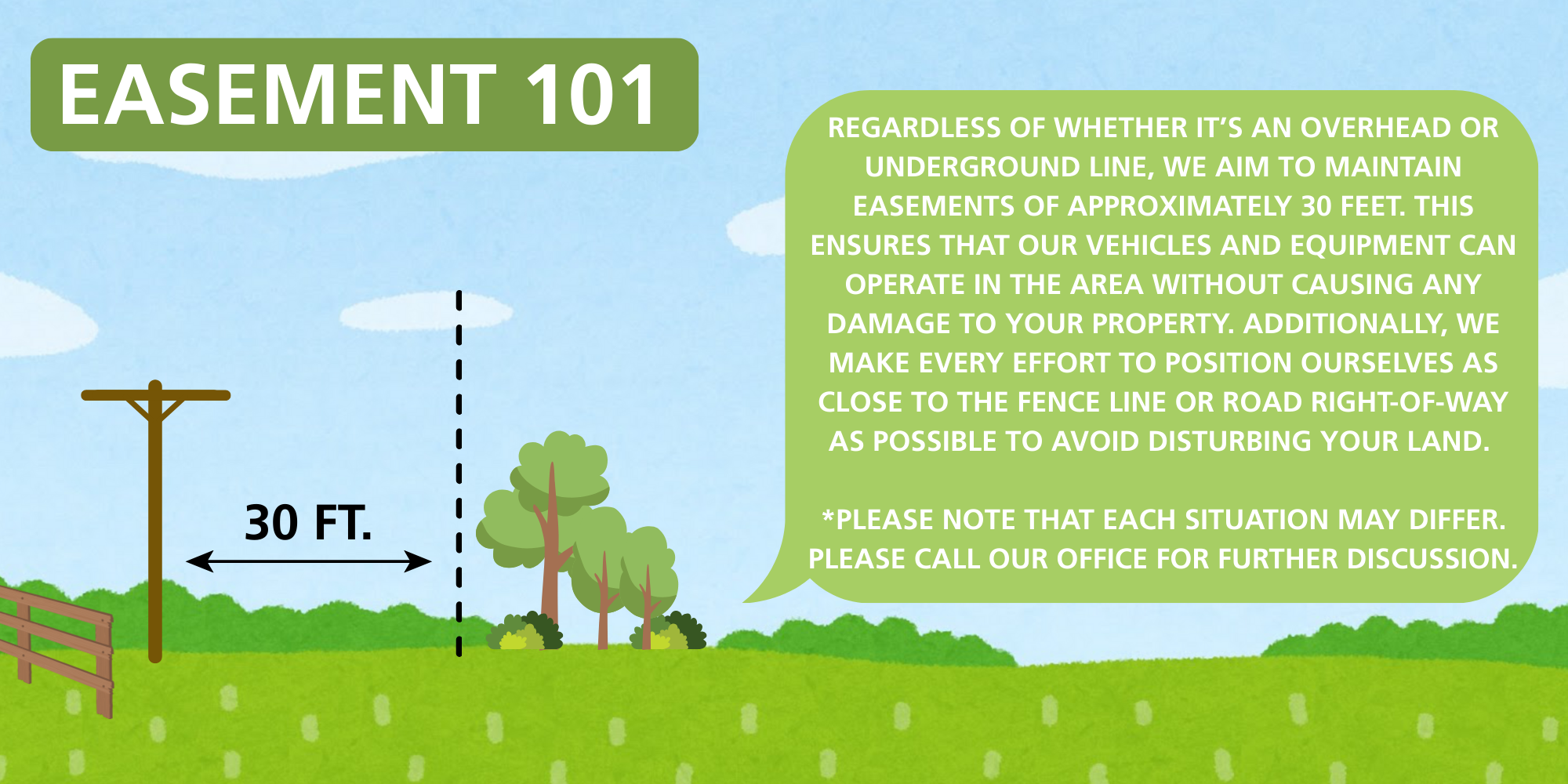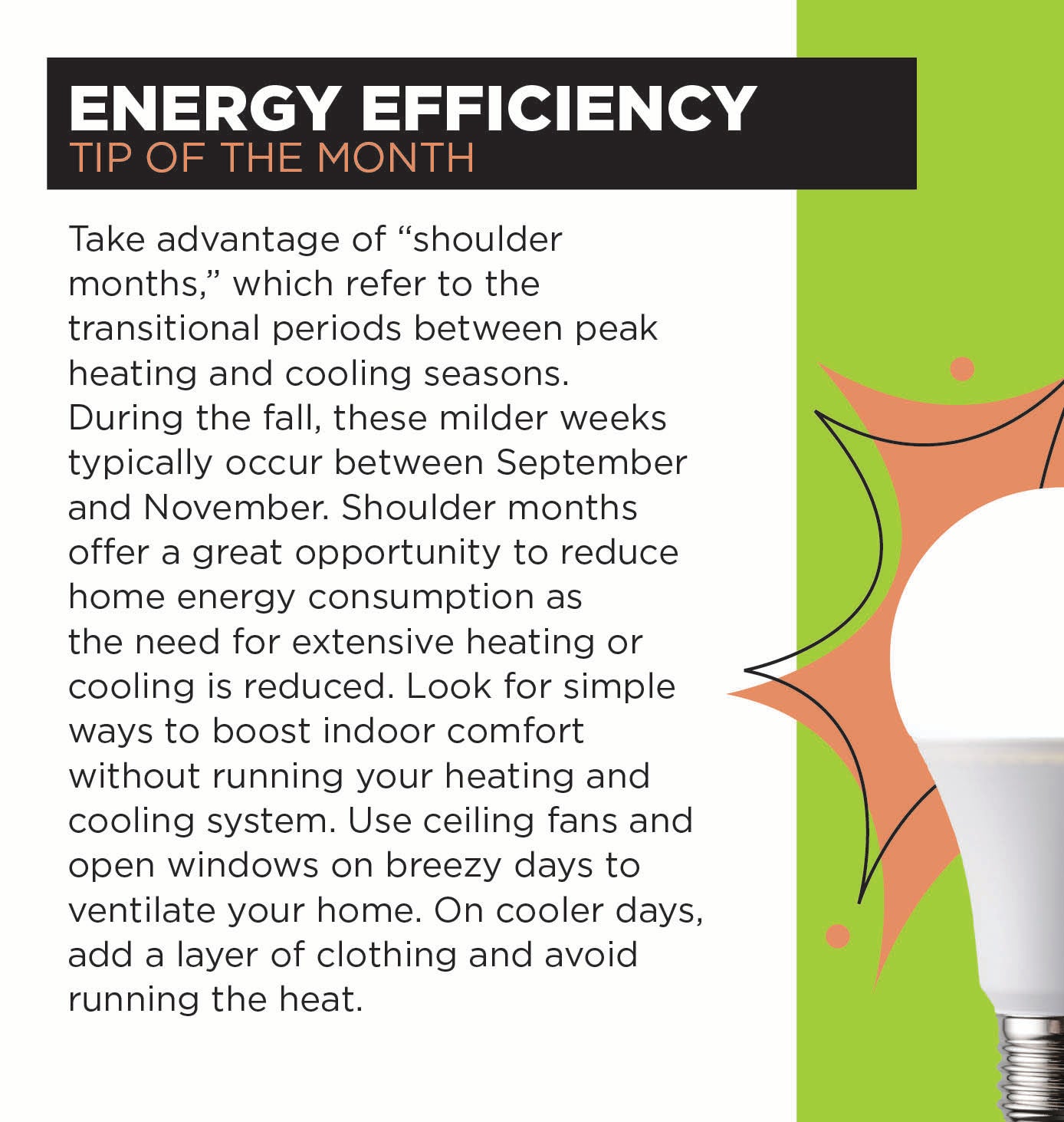Easements are legal agreements that allow utilities like High West Energy to access a specific part of your property to install, maintain, and repair equipment such as power lines, poles, underground cables, and transformers. While members still own the land, easements ensure we can safely and reliably deliver electricity to you and your neighbors. Easements are a critical component for our ongoing strategic planning to maintain reliability as we make large capital investments in new and upgraded infrastructure to the electric grid.
Easements are often recorded on your property deed and remain in place when ownership changes. This helps to protect your service and the cooperative's ability to serve the community now and in the future. You still own your property, it just allows us to do our job safely and reliably while we respect every member's property.
Easements can occur in different forms, including overhead easements, underground easements, and access easements. Keeping these easements clear of trees, buildings, fences, or other items is key. Clear, open access, including gates that are unlocked or easily accessible, allows our crews to respond quickly during outages, complete upgrades, and work safely. Additionally, please notify High West Energy if you plan to do any major landscaping or construction near our equipment.
When you allow us to maintain these areas, you're helping more than just your household, as you are also supporting faster outage restoration, safer working conditions for our crews, and a stronger electric system for everyone.
If you have questions about easements, please call our office, as we are here to help and serve our members by providing safe and reliable electricity and services.

Keep Food Safe Before, During, and After a Storm
Storm season can bring power outages, putting your food at risk of spoiling. You can keep your groceries safe and reduce waste with a little preparation.
BEFORE THE STORM
Take a few precautions:
- Use appliance thermometers in your fridge and freezer. Safe temps: 40°F (fridge), 0°F (freezer).
- Freeze water containers to help maintain cold temperatures.
- Keep coolers, ice packs or ice ready in case of long outages.
- Consider filling plastic containers with water, leaving an inch of space inside each one, to help keep food cold if the power goes out.
Stock up on ready-to-eat foods that don't need refrigeration including:
- Bottled water
- Canned goods such as veggies, fruits, beans and tuna
- Don't forget a manual can opener
- Instant mashed potatoes or oatmeal for carbs and energy
- Crackers and nuts
- Dry cereal and powdered milk
DURING AN OUTAGE
In the event of a disaster, it is important to follow a specific sequence for using your available food supply. Start with perishable foods and items from the refrigerator. Following that, turn your attention to the freezer, then begin using nonperishable foods and essential staples.
Losing a fridge full of food is costly, inconvenient, and can be dangerous if you're running low on rations. While you may not be able to save everything, here are ways to preserve food as long as possible:
- Keep doors closed. A fridge keeps food safe for up to 4 hours; a full freezer, up to 48 hours.
- Use a cooler if the power is out for more than 4 hours. Layer frozen items with fridge foods and ice for a more consistent temperature.
- If you don't have a cooler, you can use your freezer. Put ice in bowls and place them around the food to prevent melting ice from flooding your freezer. Use blankets to insulate the freezer, but ensure that air vents are unobstructed.
- Monitor temperatures with a thermometer. Food must stay below 40°F to stay safe.
- Never taste food to test safety. If it smells, looks, or feels off—throw it out.
- Don't use food that touched floodwater unless it is in waterproof packaging.
AFTER THE POWER RETURNS
- Frozen food is safe if it still contains ice crystals or has stayed under 40°F.
- Don't refreeze or cook food that got too warm.
- Throw out anything questionable.
Use the U.S. Department of Agriculture's guide to learn more about foods you can keep or should throw out after a power outage: www.foodsafety.gov/food-safety-charts/food-safety-during-power-outage.
Staying prepared can help you avoid illness, waste, and added stress during a storm.


